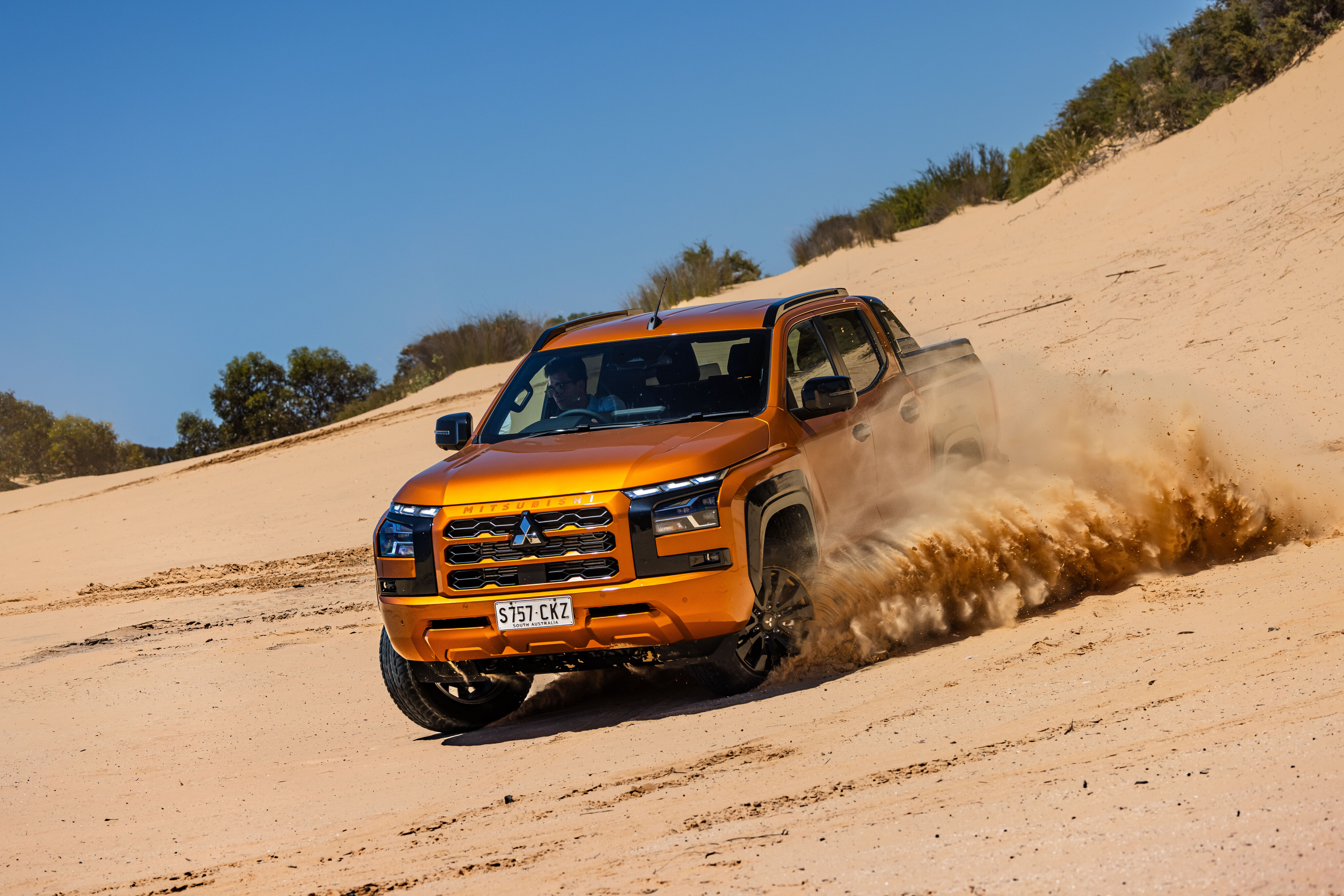
Things we like
- Direct steering feel
- Low-down torque delivery
- Overall a more premium product
Not so much
- Didn't get to drive it on bitumen
- Full evaluation will have to wait
- Significant price rise, but it is warranted
Just as important as the launch of the all-new Triton is the message Mitsubishi Motors Australia is sending with it, with the Japanese marque relinquishing its ‘value’ tag and preparing itself to no longer compete on price alone – just take a look at the new Outlander as a case in point.
Since the first-generation Triton launched back in 1978, value has always been a unique selling point for the commercial Mitsubishi model.
So the brave move to step into the highly competitive premium class currently dominated by the Ford Ranger and Toyota HiLux is not without risk, but as MMA president and CEO Shaun Westcott puts it, “Volume without profit is vanity.” The fact that it’s becoming increasingly difficult to compete with spreadsheets from GWM, Mahindra and LDV must also be considered.
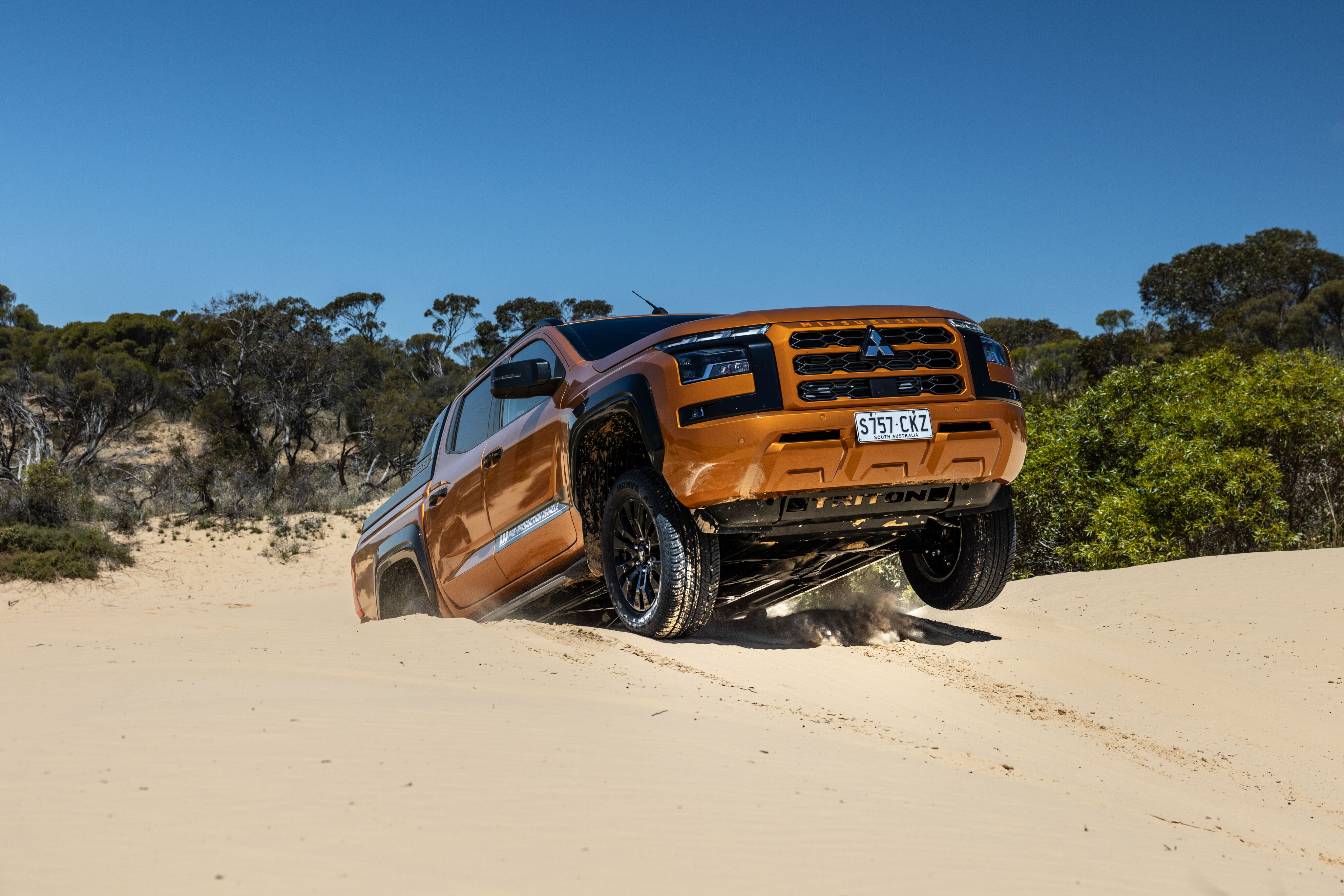
To enable this shift in class, Mitsubishi has spent the better part of seven years – the journey on this vehicle began in 2017 – essentially rebuilding the Triton from the ground up, thoroughly reworking everything from the dimensions, chassis, engine, interior and driving dynamics.
Most overdue and a boon for caravanners, its towing capacity has increased by 400kg to now meet the industry standard of 3500kg.
While the new-gen Triton is still in pre-production ahead of its debut early in 2024, we managed to secure some seat time. However, as it’s still in pre-production, there were restrictions in place on where we could drive the vehicle.
As such, we were limited to a few laps of a private off-road sand course in Peake, South Australia – but it was enough to prove that this vehicle is markedly improved compared to the outgoing model.
JUMP AHEAD
- How much is it, and what do you get?
- Powertrain and performance
- Driving impressions
- Interior package
- Safety kit
- VERDICT
- Specs
How much is it, and what do you get?
The Triton will arrive early in 2024 in dual-cab and club-cab pick-up guise, with Mitsubishi confirming cab-chassis variants won’t be available when the vehicle launches in February.
One 4x2 variant will be offered: a GLX double-cab pick-up priced at $43,690. The cheapest 4x4 model will be a GLX+ club-cab pick-up priced at $50,340, while a GLX double-cab pick-up is fractionally more expensive at $50,940. The range then extends to GLX+ ($53,290), GLS ($59,090) and GSR ($63,840) double-cab pick-up models.
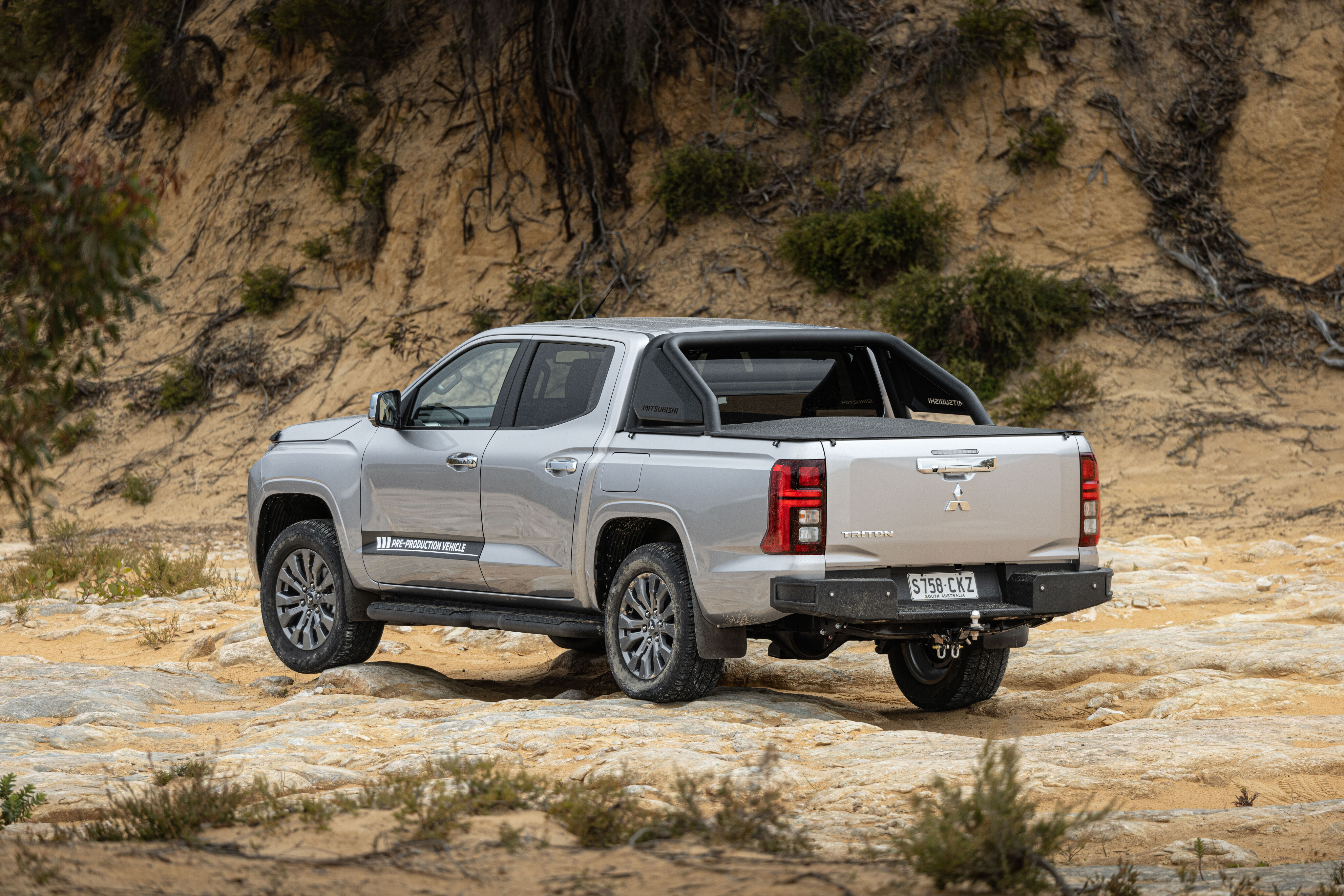
Immediately obvious is the increase in price compared to the outgoing model, with the current GSR listed at $56,940, for example, that’s an increase of $6900.
For a vehicle utilising and sourcing new parts, in addition to the global hike in logistical costs, it’s an inevitable price rise, but the new Triton is a vastly different and far more premium vehicle.
Still, like for like, $63,840 for the top-spec GSR variant is cheaper than a 2.0-litre, four-cylinder Ranger Wildtrak that retails for $68,490. The same applies when compared to the Toyota HiLux, with both the Rogue and GR Sport variants topping out at more than $70k.
The bold, aggressive-looking Triton is bigger in every dimension than the vehicle it replaces, with the new model 15mm longer and 50mm wider. Its wheelbase is considerably longer (+130mm), as is the tray length (+35mm). Because of this growth, the new Triton is built using high-tensile steel to minimise weight increases.
| Dimension | Double Cab (change) |
|---|---|
| Body length | 5320mm (+15mm) |
| Body width | 1865mm (+50mm) |
| Wheelbase | 3130mm (+130mm) |
| Tray length | 1555mm (+35mm) |
| Interior shoulder room | 1479mm (+49mm) |
| Hip point couple | 780mm (+40mm) |
| Towing capacity | 3500kg (+400kg) |
The new Triton’s ladder-frame chassis is completely new from the ground up, with its bending rigidity said to be increased by 40 per cent, and torsional rigidity by 60 per cent.
Larger diameter front struts are implemented and exclusive to Australia (about 10 per cent larger than other markets), and beefier shocks are also unique for Australia.
A big change – and arguably the most impressive after our day behind the wheel – is the adoption of an electric power-steering system for the first time in a Triton, which has radically improved the overall feel and feedback at the tiller. In fact, the gear ratio has gone from 3.7 to 3.3 turns lock-to-lock.
Only the GLS (with the leather option pack) and top-spec GSR models were available for this pre-production test drive, so assessment of the GLX and GLX+ models will have to wait. These two top-end vehicles are equipped with Mitsubishi’s Super Select 4WD II.
The GLX and GLX+ make use of the more rudimentary Easy Select 4WD system. A rear diff lock has been introduced on the GLX+ model, and a Tyre Pressure Monitoring System is a welcome inclusion across the range.
Powertrain and performance
All models released at launch will be powered by a new Mitsubishi-built 2.4-litre twin-turbo DOHC 16V MiVEC diesel engine, which develops a claimed 150kW of power at 3500rpm and 470Nm of torque from as low as 1500rpm.
That’s an increase of 17kW and 40Nm compared to the old model. All variants utilise an updated six-speed automatic transmission, with a six-speed manual to be offered on some models post-launch.
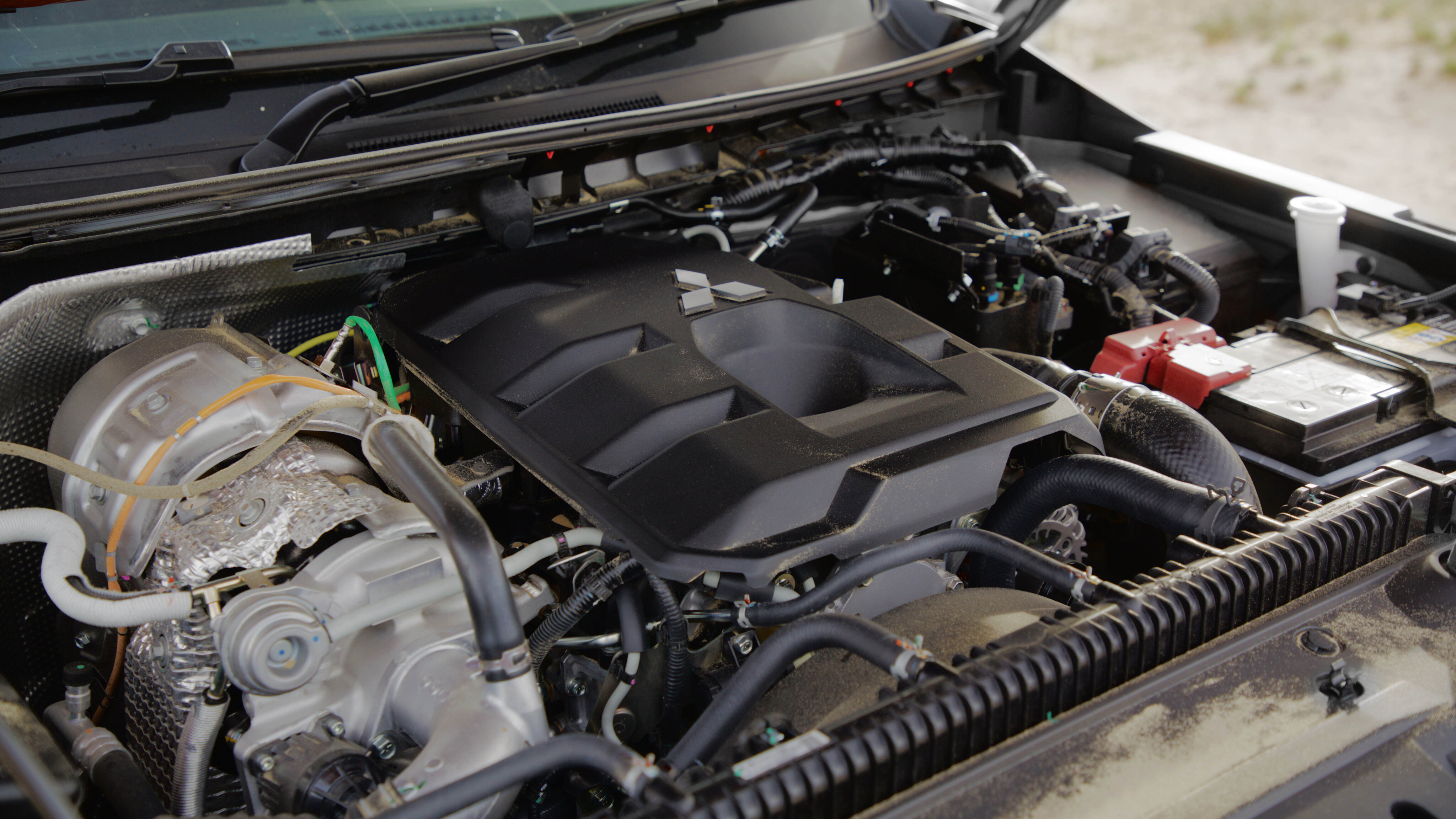
MMAL’s senior manager of product strategy, Owen Thomson, was emphatic that this engine is completely new, telling us that as well as now featuring a twin-turbo setup, a higher-pressure fuel delivery is partially responsible for this increase in power and torque – up by 10 per cent each, actually – and that other mechanical changes such as longer piston rods have been employed.
An “Auto Stop and Go” system is standard across the range, and is said to improve fuel economy. Mitsubishi says the ADR fuel consumption of both the GLS and GSR vehicles is 7.7L/100km.
As mentioned, lower-grade models utilise Mitsubishi’s Easy Select 4WD (part-time 4x4) system while upper-spec models – like the GLS and GSR as tested – benefit from Mitsubishi’s signature Super Select II system with 2H, 4H (full-time 4x4), 4HLc and 4LLc. The number of drive modes has also increased from four to seven, and now consists of Normal, Eco, Gravel, Snow, Mud, Sand and Rock.
Driving impressions
To stay on the right side of the law, our testing grounds were limited to a private off-road track with terrain that consisted almost entirely of sand.
So to fully test the vehicle’s capabilities and additional drive modes, a more comprehensive drive program is slated for early 2024. And yes, that will include bitumen. Until then, our impressions are largely limited to how the vehicles – GLS and GSR models – fare on sand.
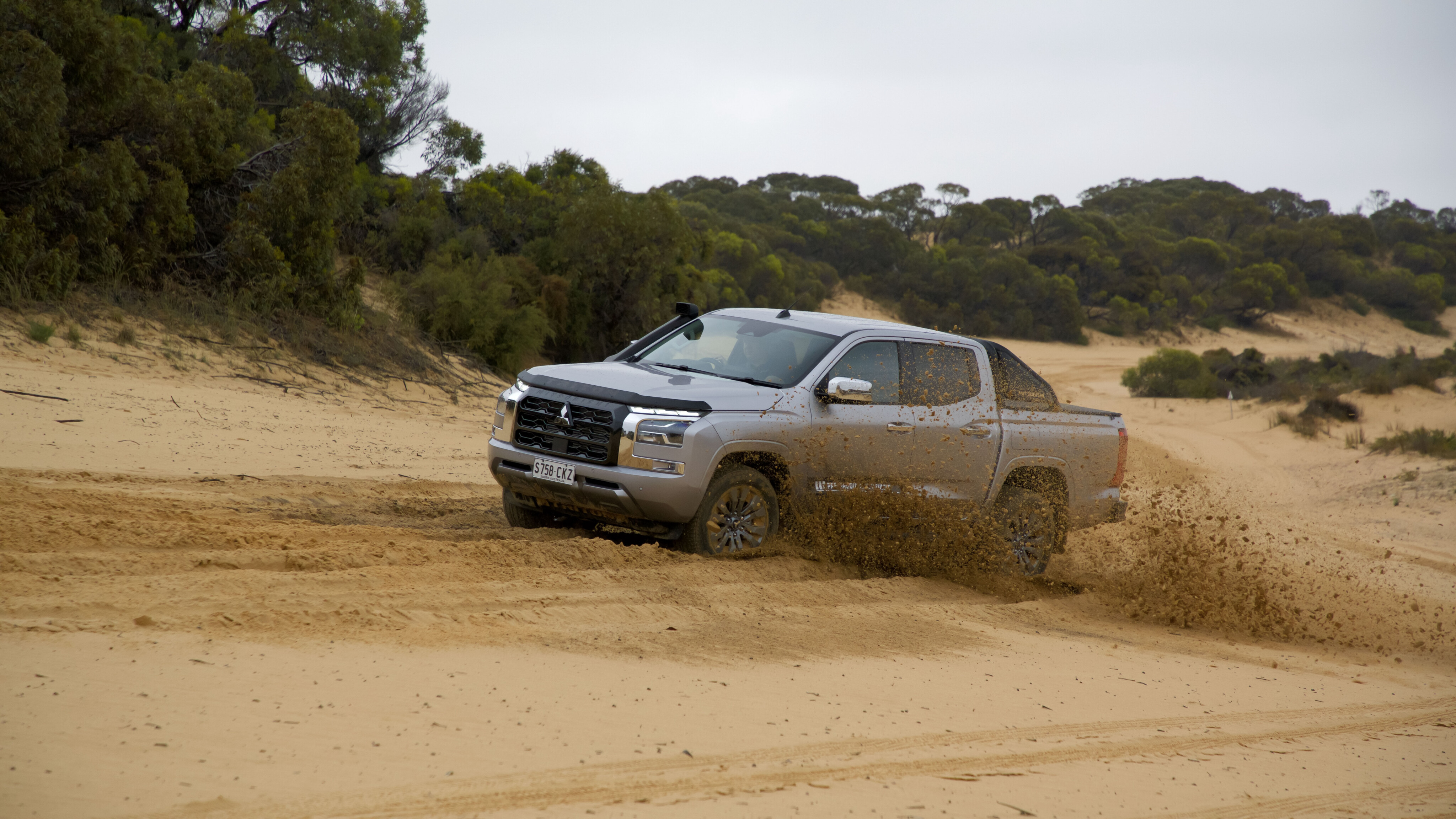
Sitting 50mm wider than the vehicle it replaces, the new Triton certainly feels more surefooted.
Combined with the redesigned chassis and the adoption of the electric power-steering system, the Triton feels direct and extremely well planted, with a feel and feedback through the steering wheel not experienced before in the Triton. The double-wishbone front suspension soaks up bumps and ruts well, and there’s a noticeable decline in head-wobble as a result. The rear leaf springs are also lighter, and provide a more compliant ride.
Most striking about the new 2.4-litre engine is the low-down delivery of torque which, as mentioned, peaks from as low as 1500rpm. As sand was the only surface on the menu – and perhaps chosen by Mitsubishi for this reason – this early torque delivery gives the Triton a responsive and spritely feel when burying the foot from standstill, and on our drive loop it climbed big dunes with ease.
Interior package
The 50mm-wider overall dimensions of the Triton have given it noticeably more interior space.
Combined with a modern and elegant cabin, Mitsubishi has definitely succeeded in transitioning the Triton from a purely value proposition to a premium product. Whether this premium feel carries over to the thriftier GLX and GLX+ is yet to be seen.
The redesigned A-pillars highlight Mitsubishi’s focus to not only improve space, but also benefit those on-board. They’re flatter and more upright, which in effect means there’s less curvature at the front of the vehicle, which not only opens up the field of vision and increases cabin space, but it makes vehicle entry and exit easier.
Both the GLS (with $1500 leather option pack) and GSR feature soft leather trim and contrast stitching – silver on GLS and orange on GSR. On our short drive the seats felt comfortable, supportive and appeared to be bolstered in all the right areas with additional lower back support, aided by a 20mm higher hip point.

The GLS gets heated front seats while the GSR adds GSR-specific floor mats and extra cup holders on the front dash. Both variants feature powered driver’s seat adjustment.
The rear seats are comfortable and spacious for three abreast – with 49mm more second-row shoulder room than before – and provide easy access to USB-A and USB-C ports. Rather than rear air conditioning ducts, the air-circulation system for rear passengers has been carried over from the previous model.
Other interior features standard across the dual-cab range include numerous cup and bottle holders, sunglasses holder, driver’s seat electric lumbar support, seat-back pockets for phone and tablet storage, and an armrest in the rear bench seat.
The nine-inch infotainment grows by two inches compared to the outgoing model and it features embedded satellite navigation, traffic sign recognition and wireless Apple CarPlay (wired Android Auto). It is clear and bright and easy to use.
Climate controls and the Super Select 4WD II system are controlled via dials rather than buttons, which is a plus in our book. The dash layout is also user-friendly and well laid out.
Safety kit
The next-gen Triton won’t be tested by ANCAP until Q1 of 2024 so results are unlikely to be available until mid-April.
Hazarding a guess and looking at the long list of standard safety kit, a five-star ANCAP rating is likely.
All dual-cab models are equipped with a suite of airbags (driver and front passenger; centre; driver and front passenger side; driver’s knee; and curtain). Standard safety kit across the range includes Forward Collision Mitigation with pedestrian detection, cyclist detection and junction assist; Adaptive Cruise Control; Blind Spot Warning/Lane Change Assist; Emergency Lane Keeping; Emergency Lane Assist; Lane Departure Prevention; front and rear parking sensors; a rear-view camera; front and rear cross traffic alert; multi-collision brake; traffic sign recognition; Driver Attention Alert and Driver Monitor System (deactivated during our test); an Intelligent Speed Limiter; and an Automatic High Beam system.
As expected, Active Stability Control; Anti-Lock Braking System; Traction Control; Electronic Brake Distribution (EBD); Brake Assist system; Trailer Stability Assist (TSA); Hill Start Assist (HSA); Emergency Stop Signal (ESS) are all included. Rear Automatic Emergency Braking is missing on the GLX variant but available on GLX+ and above grades.
VERDICT
Mitsubishi’s brave yet inevitable decision to break away from the value stigma attached to its brand means it’ll now have to compete more intimately with the heavy hitters of the segment, but does the Triton have the chops to seriously contend with the Ranger and HiLux?
Sure, our time behind the wheel of the new-gen Triton was rather brief and one-dimensional (sand), but it was enough to convince us that the Triton has transformed into a bigger and better vehicle worthy of the premium-vehicle label. However, until we get a more comprehensive experience behind the wheel on all road surfaces, it’s hard to say how competitive it will be.
What is obvious is that the new Triton is far better than the model it replaces in just about every way, and we expect it will have a place at the table with the segment’s best.
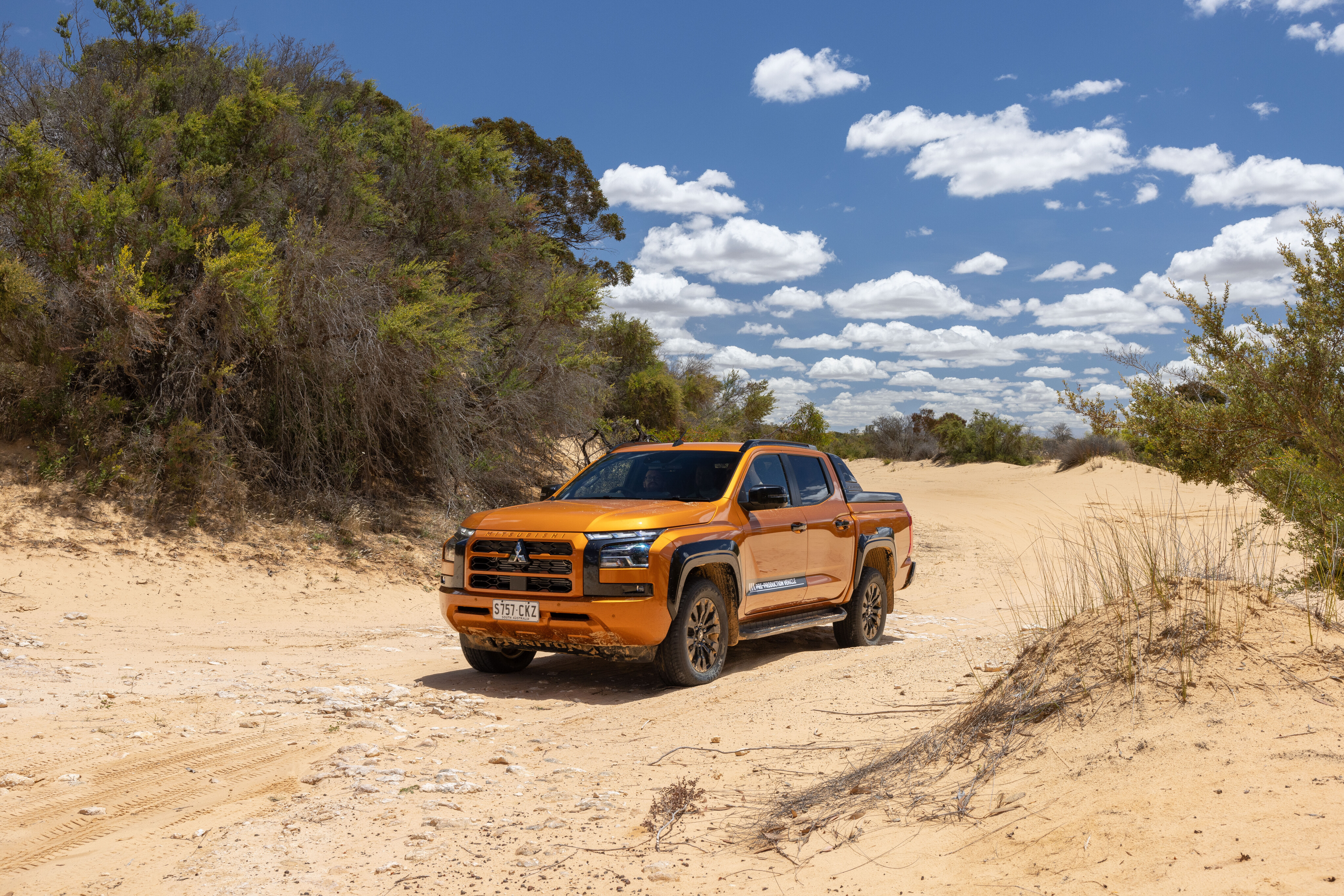
Specs
| 2024 Mitsubishi Triton GSR double cab | |
|---|---|
| Price | $63,840 +ORC |
| Engine | I4 twin-turbo DOHC 16V MiVEC diesel |
| Capacity | 2442cc |
| Max power | 150kW @ 3500rpm |
| Max torque | 470Nm @1500-2750rpm |
| Gearbox | 6-speed automatic |
| Crawl ratio | 37.782:1 (auto) |
| 4X4 system | On-demand selectable full-time 4x4 with high and low range |
| Construction | 4-door ute body on ladder chassis |
| Front suspension | IFS with struts and coil springs |
| Rear suspension | Live axle with leaf springs |
| Tyres | 265/60R18 Maxxis Bravo 790 A/T |
| Towing capacity | 3500kg |
| Seating capacity | 5 |
| ADR fuel consumption | 7.7L/100km combined cycle |
| Departure angle | 22.8° |
| Rampover angle | 23.6° |
| Approach angle | 29.0° (30.4° GLX and GLS) |
| Ground clearance | 222mm |
Things we like
- Direct steering feel
- Low-down torque delivery
- Overall a more premium product
Not so much
- Didn't get to drive it on bitumen
- Full evaluation will have to wait
- Significant price rise, but it is warranted



COMMENTS